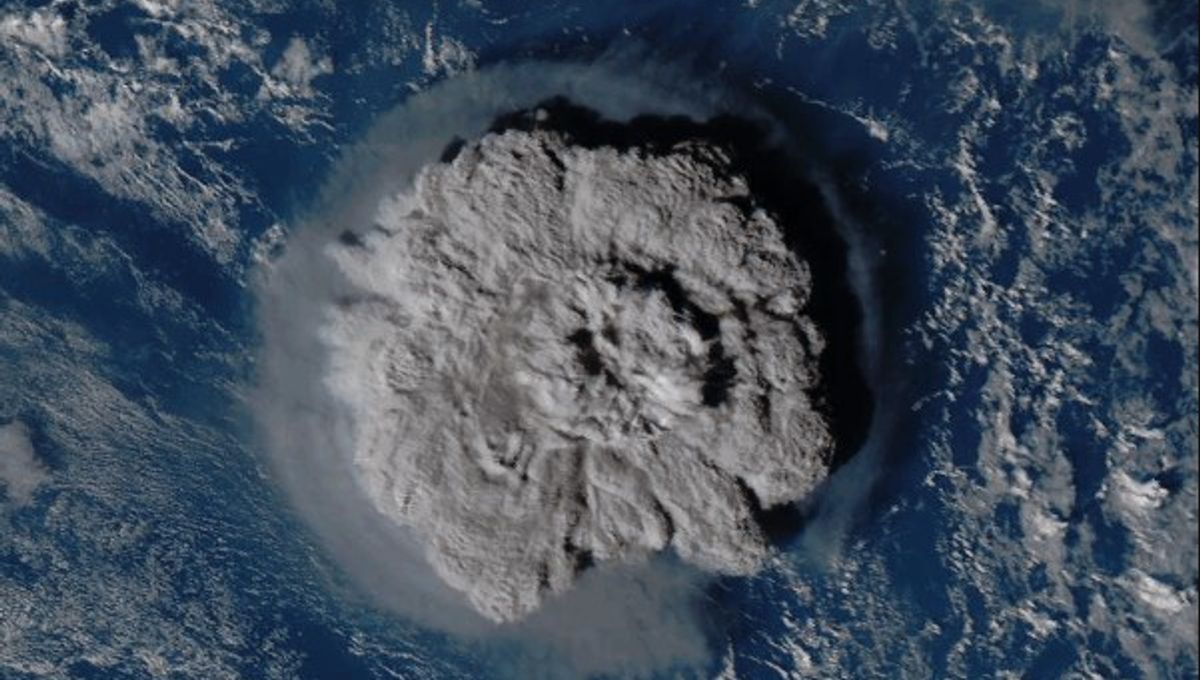
The cause of the gargantuan underwater eruption that occurred off the coast of Tonga in early 2022 may finally have been identified, and it’s appropriately wild. Using techniques that were developed to measure the force of underground explosions, the authors of a new study suggest that the event was triggered by a somewhat unusual process not typically associated with eruptions of this kind.
“Our findings confirm there was an explosion, possibly due to a gas-compressed rock, which released energy that equated to five of the largest underground nuclear explosions conducted by North Korea in 2017,” explained study author Jinyin Hu in a statement.
On January 15, 2022, the Hunga Tonga-Hunga Ha’apai volcano blew its top with such force that the Earth’s atmosphere became filled with water, resulting in the creation of a new hole in the ozone layer. The eruption – which occurred beneath the Pacific Ocean – absolutely smashed a series of records, producing the largest ever volcanic plume while also generating one of the loudest sounds the world has ever heard.
Yet despite the huge amounts of seismic data generated by the blast, scientists have until now struggled to explain what caused Hunga Tonga to erupt so violently. To find an answer, the authors of the new study built a model that combines multiple aspects of this data.
Specifically, they used a value called the moment tensor – which represents the source of earthquakes – and the single force, which does the same for volcanic eruptions. The resulting model suggests a colossal upward force that matches up well with the magnitude of the event.
The researchers therefore suggest that the eruption occurred when a shallow underwater explosion caused the water above the volcano to shoot upwards. This, in turn, relieved the pressure on the compressed rock beneath, causing it to “rebound” with incredible force.
“Our model suggests the event resulted from the gas-compressed rock being trapped underneath a shallow sea, like an overcooked pressure cooker,” says Hu. “This would be surprising to many because it had been commonly thought that the interaction of hot magma with cold seawater caused such massive underwater volcanic eruptions.”
While the researchers admit that their model remains “debatable”, they go on to say that their calculations suggest that the mechanism they propose is “viable”.
“Using seismic waveform modelling, we observed a significant vertical force pointing upward during the event,” adds study author Professor Hrvoje Tkalčić. “At first, we were confused by it. But then we realised that the solid earth rebounded upwards after the water column got uplifted.”
The study is published in the journal Geophysical Research Letters.
Source Link: Explosion Equivalent To Five North Korean Nuclear Bombs Triggered Tongan Volcano Eruption